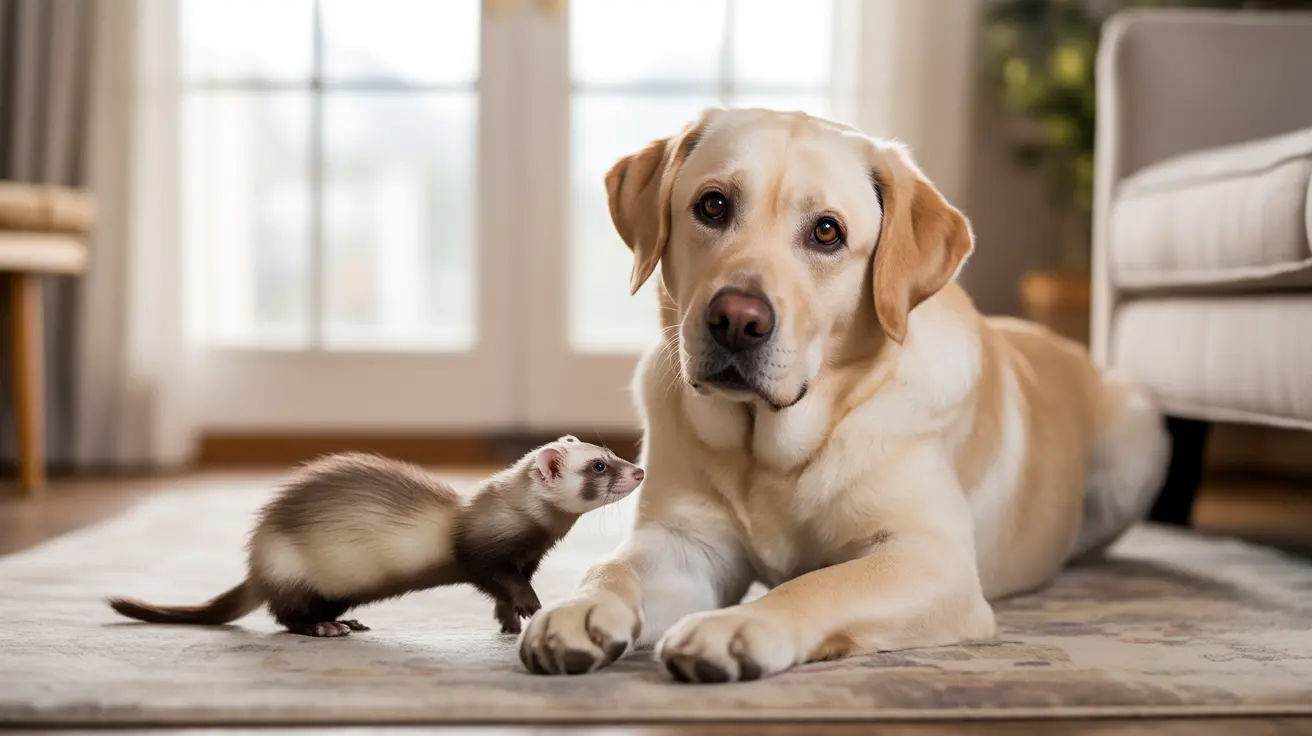Many pet owners dream of having multiple furry friends living harmoniously under one roof. If you're considering adding a ferret to your dog-friendly household (or vice versa), you might be wondering: do ferrets and dogs get along? The answer isn't simple, but with proper understanding and preparation, these two species can often develop fascinating and rewarding relationships.
While success isn't guaranteed, many dogs and ferrets can become compatible companions or even playful friends when introduced correctly. The key lies in understanding both animals' natural behaviors, implementing proper introduction techniques, and maintaining constant supervision during their interactions.
Understanding Natural Behaviors and Instincts
Dogs and ferrets have distinctly different evolutionary backgrounds that influence their interactions. Dogs are pack animals with varying prey drives, while ferrets are natural hunters themselves. This combination can either lead to playful companionship or potential conflict, depending on various factors.
Ferrets often display bouncy, energetic behavior that might trigger a dog's chase instinct. However, many dogs can learn to view ferrets as family members rather than prey, especially when properly socialized from a young age.
Breed Compatibility Considerations
Not all dog breeds are equally suited for sharing space with ferrets. Some breeds present higher risks due to their strong prey drives:
- Terriers (particularly Jack Russell and rat terriers)
- Hunting breeds (pointers, retrievers)
- Sighthounds (greyhounds, whippets)
Better-suited breeds often include:
- Gentle giants (Great Danes, Newfoundlands)
- Many companion breeds (Cavalier King Charles Spaniels, Pugs)
- Well-trained herding breeds (Collies, Shepherds)
Creating a Safe Introduction Environment
The initial meeting between your dog and ferret sets the tone for their future relationship. Here are essential steps for a successful introduction:
Preparation Phase
- Ensure both pets are healthy and vaccinated
- Create separate safe spaces for each animal
- Have treats ready for positive reinforcement
- Keep your dog on a leash
- Install baby gates or barriers if needed
The Introduction Process
- Start with barrier introductions
- Allow supervised visual contact
- Maintain strict control over interactions
- Reward calm, non-aggressive behavior
- Gradually increase exposure time
Signs of Positive Interactions
Watch for these encouraging signals that indicate your pets are getting along:
- Relaxed body language in both animals
- Gentle play initiation
- Mutual curiosity without aggression
- Respecting each other's space
- Comfortable co-existing in the same room
Warning Signs to Watch For
Be alert for these red flags that might indicate incompatibility:
- Excessive stalking behavior from your dog
- Fear or aggressive responses from either pet
- Rough play that could harm the ferret
- Obsessive focus from the dog
- Stress signals from either animal
Frequently Asked Questions
What dog breeds are safest to have around ferrets without triggering their prey drive?
Breeds known for gentle temperaments like Labrador Retrievers, Golden Retrievers, and well-socialized companion dogs typically do best with ferrets. However, individual personality matters more than breed.
How should I properly introduce my dog and ferret to ensure they get along?
Start with controlled, leashed introductions in neutral territory. Keep sessions short, reward calm behavior, and gradually increase interaction time as both pets show comfort and positive responses.
What signs indicate my ferret and dog are comfortable and playing well together?
Look for relaxed body language, gentle play initiatives, mutual respect of boundaries, and willingness to rest near each other. Neither animal should show signs of stress or fear.
How can I prevent my dog from accidentally harming my ferret during play?
Always supervise interactions, establish separate safe spaces, and interrupt play that becomes too rough. Consider size differences and ensure your ferret has escape routes.
Should I always supervise interactions between my dog and ferret, even if they seem friendly?
Yes, always supervise their interactions, regardless of how well they seem to get along. Accidents can happen quickly, and prevention is crucial for both pets' safety.
Conclusion
While dogs and ferrets can indeed get along, success requires careful preparation, proper introduction, and ongoing supervision. Understanding both pets' needs and behaviors, choosing compatible breeds, and maintaining consistent training will help create a harmonious multi-pet household. Remember that every animal is unique, and what works for one pair might not work for another.






